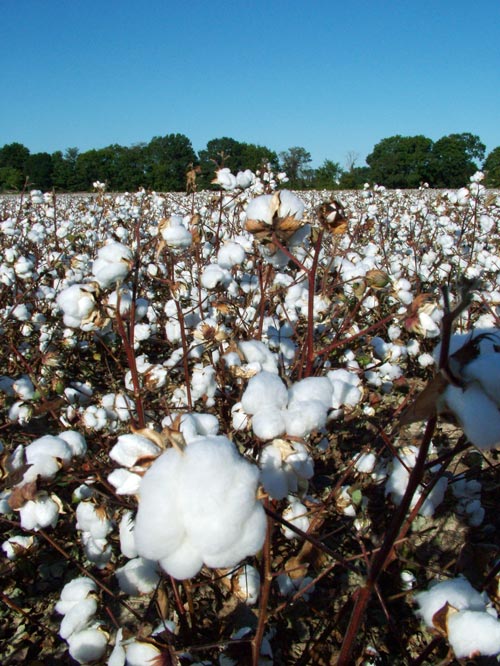October 7, 2010

Though the cotton insect season — for all practical purposes — is now over, it’s still a useful exercise to look back over this past year to see if there’s something that might be carried forward to 2011, says Ron Smith, Auburn University Extension entomologist.
“The heat and lack of rainfall knocked about three or four weeks off our production season this year, and that also cut three or four weeks from our insect year,” says Smith. “The weather was the dominant factor in 2010, and overall I’d classify cotton insects as lighter than normal in Alabama, although that is not true throughout the U.S. Cotton Belt.”
There has been tremendous pressure this year from different insect species from the Mid-South to South Carolina, which had heavy bollworm pressure, he says. “Thrips and aphid pressure was pretty light here, and bollworms also were fairly light. We had conventional cotton maybe that ought to have been sprayed for bollworms, but it wasn’t. But boll damage wasn’t very bad on conventional cotton with no sprays in central Alabama. Tobacco budworms haven’t been a problem here but they have been in southwest Georgia,” says Smith.
There has been some level of fall armyworms on Alabama cotton this year, but not as bad as in 2009, he adds. “It’s different in other crops. There are two strains of fall armyworms, and one will feed on other crops,” he says.
Tarnished plant bugs
Tarnished plant bugs were bearable in Alabama this year, says Smith, with large numbers early in the year. “We never know quite how to react to those. Last year, weather conditions were dry early, and it didn’t matter what we did with insect control because we made better yields on our late-planted cotton. It has been just the opposite this year. We’ll make better yields on our earlier planted cotton, and every square we lost to plant bugs is one less boll we’ll pick on that cotton.
“If we could predict the weather, we’d know where to set our thresholds and how hard to go after plant bugs,” he says.
Stink bugs have been in high numbers this year, and it’s predominately the stink bug, says Smith, a species that requires a totally different approach when selecting chemistry for control.
“The brown stink bug is much more difficult to control than the Southern green stink bug, which is the dominant species in most years. We have not found anything in our test work that competes well with Bidrin on the brown stink bug. We have new chemistries out there, but preliminary results show they are not killing brown stink bugs,” he says.
Fall armyworms — the grass strain — are in large numbers on hay crops, pastures and peanuts throughout the southern part of Alabama, up to 30 per square foot on pasture and peanuts, notes Smith.
“They’re often heavier on the field borders than they are out in the field, because many times they are coming in from the grasses on the field border. But that’s not where all of the eggs are being deposited. The choices for control are pyrethroids, Intrepid and Dimilin, or some combination of those products. If you have time, the long-residual materials like Intrepid or Dimilin are good because you’ll get from two weeks to one month control.
“But if you don’t find them until a lot of the damage is done there are large worms there, then you don’t have time to wait four or five days, and you must wait four or five days with Intrepid and Dimilin to get a good evaluation. If you don’t have that, you either need to mix a low rate of pyrethroids with these products or go with a straight pyrethroid.”
Temperature related
Growers need to remember that whenever temperatures reach 98 to 100 degrees, pyrethroids do not work on bollworms on cotton, says Smith. Also, bollworms are showing high levels of resistance to pyrethroids in Lousiana.
“We’ve had that problem before, and eventually the problem will grow and spread. When we lose the pyrethroids to the bollworm species, it’ll really knock a hole in our arsenal. We’ve counted on those for about 25 years now. Also, the bifenthrin type of pyrethroids is leaving some bollworms behind. We’ve had a number of control failures for three years now, and we’re evaluating those this year.”
Turning to soybeans, Smith says that the red-banded stink bug is a potential problem on the crop in Alabama. “This is the first year we’ve found it in Alabama, and I found it at our Gulf Coast experiment station. They’re not hard to control, but they can build in tremendous numbers and cause significant damage. They will destroy your peanut crop in a short period of time. You can control them, but they have a tendency to rebound in 10 to 14 days. They’re 10 times more damaging than regular stink bugs in soybeans. They are sensitive to winter kill, so they might never be a problem in the extreme northern part of the state.”
About the Author(s)
You May Also Like




